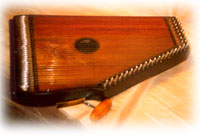

This made it more convenient for the Sikh army to carry the instrument on horseback. This attempt was intended to ‘scale down’ the Taus into what is now known to be the Dilruba. The Dilruba was then produced to replace the previously heavy instrument (the Taus). Peg service is part of the work done with a Full Sitar Jawari.The Dilruba originates from the Taus and some argue is the work of the 10th Sikh Guru, Guru Gobind Singh, whilst that of the Taus was the work of Guru Hargobind (the sixth guru of the Sikhs). If the pegs continue to slip, they will need to be filed to correct the taper and to remove any lip ridge.

Do not use blackboard chalk as it has wax in it to prevent squealing, and this wax will ruin the peg. When changing the strings it is a good idea to lightly chalk the pegs with carpenters or sidewalk chalk. Walking through doorways needs extra care.ĥ: The frets should be polished with #0000 steel wool every few months to keep them smooth and clean for meend (pulling the string to the side).Ħ: Sitar pegs can begin to slip after a year or so of use.

You can tell when the Jawari needs to be done, as the instrument will have lost its tone, and sounds more and more distorted and buzzy.Ĥ: The gourds are very fragile and must be protected from any kind of knock. It should only be done by a professional. It is then time to have the bridges resurfaced, This is called Sitar Jawari. Do not use furniture polish on a sitar.Ĥ: With use, the bridges become grooved under the strings.

The strings should be wiped of after every use. One Example: (Ravi Shankar) C, B, C, D, E, F, F#, G, A, B, C, D, Eġ: The sitar should be kept in a case or under a cloth coverĢ: The sitar strings should be changed regularly depending on how often they are used.Ī sitar that is played daily should have all the strings changed every 3 months, and the main playing string, “ma” every month.ģ: The finish should be rubbed down with a soft dry cloth after every playing to maintain the shine. The sympathetics are tuned, depending on the raga, from middle C to E above high C.


 0 kommentar(er)
0 kommentar(er)
